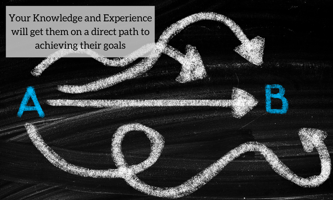To stand out from your competition and to create successful marketing campaigns, you must create...
Where To Find Your Target Audience
.png?width=1200&name=Blog%20Post%20Image%20(1).png)
Launching a new brand—product or service—comes with a big risk. Understanding the market landscape will help you minimize that risk and allow you to focus your brand marketing efforts in the most cost-effective way possible. Identifying the right target audience for your brand is one of the most vital pieces of a marketing strategy. Strategies that are broad too begin with, are typically less successful than highly niched or targeted market segments.
Therefore, before you begin marketing efforts for your brand, you need to define your target audience—the specific group that you can expect to purchase your products or services. It will comprise your existing customers and potential customers.
This is slightly different from defining your target market, which consists of anyone who could be interested in your products or services. Target audiences are the groups of people in which you want to focus your brand marketing efforts—whether it’s through a digital marketing campaign, advertisement, or on social media through a social network.
To determine your target audience, you must spend time analyzing the data you receive from customer engagements, evaluating current buyers, purchase trends, and optimizing as new information is revealed.
The following steps should help you define your target audience.
Analyze your customer base
One of the best ways to determine who your target audience is is to look at who already buys your product or service. How old are they, where do they live, what are their interests? A good way to learn this is through engaging on social or distributing customer surveys.
Conduct market research and identify industry trends
Look at the market research for your industry to determine where there are holes in service that your product can fill. Look at trends for similar products to see where they are focusing efforts, then hone in further on your product's unique value.
Analyze competitors
Marketers can learn a lot by looking at competitors to see who they are selling to and how they go about it.
Create personas
Creating personas is a great way to drill down into the specific segments that make up your target audience. This is especially helpful if you have a product that appeals to a wide range of consumers. Personas allow you to determine the general demographics, personalities and needs of your target consumers.
Define who your target audience is
Try to be specific in determining who your audience is and who it isn’t. Knowing this will keep you from spending ad dollars on segments that will not bring returns.
Continuously revise
As you gather more data and interact with customers, you will get an increasingly accurate understanding of your target audiences. Based on this information, you must constantly optimize and hone personas to achieve the best results.
Use Google Analytics
Google Analytics offers extensive data about the users visiting your site. This information can be leveraged to determine key insights such as what channels your target is coming from or what type of content they are engaging and connecting with the most. Using this data will allow you to make better decisions during the media planning process.
It’s important to understand that your marketing efforts need to constantly be oriented around your customer. Personalization helps to advance customer relationships. When you know your target audience and its pain points, you can create content more effectively and focus your marketing message for each of those segments. It’s important to recognize that not all messages resonate the same way with various groups of people.





